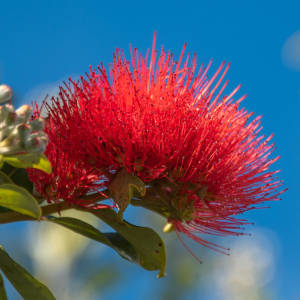Glowing to Keep Warm
It has been really cold again today but the sun did show her smiling face for some time this afternoon. I have blipped this Camellia before, (sorry I still do not know its name), the first time in May. It did start to come out so early and still is flowering. Because we haven't had a frost for a few days this flower was looking so good this morning, I thought it deserved anther blip.
About the Camellia
Camellias were cultivated in the gardens of China and Japan for centuries before they were seen in Europe. The German botanist Engelbert Kaempfer reported that the "Japan Rose", as he called it grew wild in woodland and hedgerow, but that many superior varieties had been selected for gardens. He was told that the plant had 900 names in Japanese. Europeans' earliest views of camellias must have been their representations in Chinese painted wallpapers, where they were often represented growing in porcelain pots.
Today camellias are grown as ornamental plants for their flowers; about 3,000 cultivars and hybrids have been selected, many with double or semi-double flowers. Some varieties can grow to a considerable size, up to 100m², though more compact cultivars are available. They are frequently planted in woodland settings, alongside other calcifuges such as rhododendrons, and are particularly associated with areas of high soil acidity, such as Cornwall and Devon in the UK. They are highly valued for their very early flowering, often among the first flowers to appear in the late winter. Late frosts can damage the flower buds, resulting in misshapen flowers.
There is great variety of flower forms:
Single (flat, bowl- or cup-shaped)
Semi-double (rows of large outer petals, with the centre comprising mixed petals
and stamens)
Double: paeony form (convex mass of irregular petals and petaloids with hidden
stamens)
Anemone form (one or more rows of outer petals, with mixed petaloids and
stamens in the centre)
Rose form (overlapping petals showing stamens in a concave centre when open)
Formal double (rows of overlapping petals with hidden stamens)
For more information on Camellias.

Comments
Sign in or get an account to comment.


